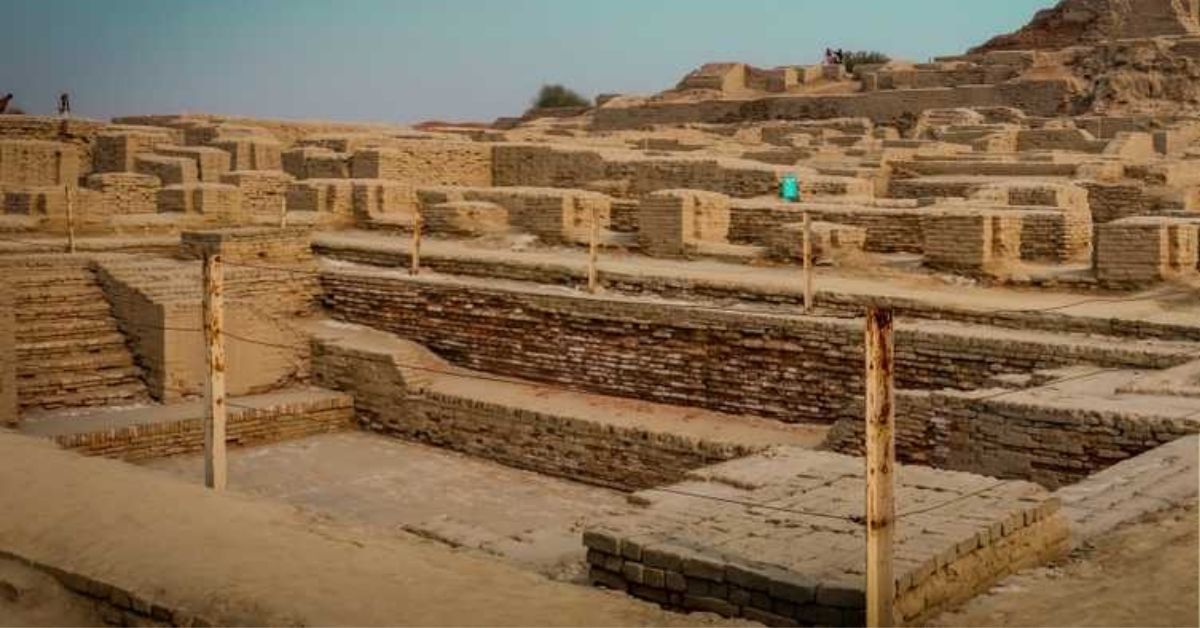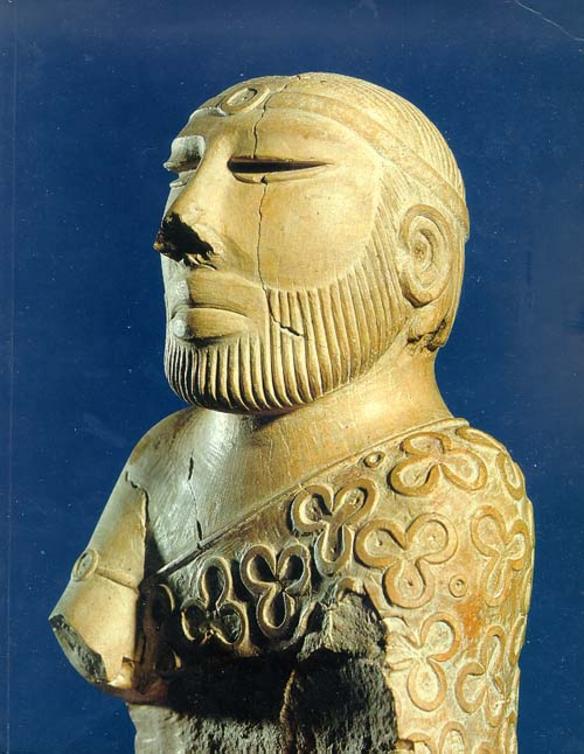4500-Year-Old Harappan Vanity Case Has These 5 Items You Use Even Today
Even though the Harappan script remains undeciphered, their archaeological remains suggest that they were quite a fan of grooming.

One’s first impression of the sculptures yielded in excavations from various Harappan sites across India and Pakistan, is of how prim and proper the Harappans were. Take, for example, the Harappan Priest King who flaunts a gentlemanly, kempt beard with sharp and precise lines around his cheek and jawlines. It showcases the meticulous approach of the Harappans towards grooming and appearance, and the usage of personal care products.

The Harappan script remains undeciphered, leaving us with only tangible archaeological remains to discover and interpret the lives of its inhabitants. Well-planned cities to an advanced ceramic culture speak volumes of the objects and technologies that were used in their day-to-day routine 4,500 years ago. One aspect includes a range of beauty and grooming paraphernalia that were used by the Harappans.
The Indus Valley Civilisation covers an area of over a million square kilometers. It extends from Shortugai (Afghanistan) in the north to Daimabad (Maharashtra, India) in the south and from Sutkagan Dor (Pakistan) in the west to Alamgirpur (Uttar Pradesh, India) in the east. Within this radius lies over thousands of sites, among which some of the most famous are Harappa, Mohenjodaro in Pakistan, and Rakhigarhi (Haryana), Dholavira (Gujarat) and Kalibangan (Rajasthan) in India. Among the grooming tools excavated from the many Harappan sites that have been in use since 2500 BCE (mature Harappan phase), some include:
The Mirror:
Unearthed from various Harappan sites, the mirrors used during the Indus Valley civilisation were quite different from the glass mirrors that we use today. Dating back to 2000 BCE, they were made of copper and bronze wherein one side of the object was polished while the other side was left plain. These mirrors are oval in shape. Among them, two bronze mirrors that were found at the site of Mohenjodaro possess handles with a hole at the end. On two occasions, mirrors were found in burials with other grave goods. At Harappa, for instance, a copper mirror was found in the water jar along with other pottery and in Kalibangan, a bronze mirror was placed in a grave close to the head of a human skeleton. A Harappan mirror is currently housed at the National Museum of India in New Delhi.
Kohl:
While a few Indus Valley Civilisation sites boast of kohl sticks, the others housed caskets with traces of kohl, collyrium and cerussite (a carbonate of lead). Made of copper/bronze, ivory and bone, the sticks are long and round. Procured from the sites of Harappa and Mohenjodaro, they are pointed at one end with a pin, tooth-pick, ear-cleaner or a decorative figure on the other. However, the kohl caskets were made of bronze, silver, faience, alabaster, terracotta and sometimes stone. The narrow-mouthed and long neck vessel found in Chanhudaro suggests that it was made to store kohl. The vessel comprises minute holes that are drilled on either side. Archaeologists suggest that these holes were considered to have once contained some cosmetics, and it was thought necessary to hang them up to protect their contents from mice and ants.
Copper implements:
A toilet kit with a combination of copper implements such as earscoop, piercer and tweezers were found in Harappa. Over 12 such kits were found in sites such as Kish in Iraq and Ur in Mesopotamia. This could be a result of the trading relationship that prevailed between these civilisations, with some phases of them being contemporary to that of the Indus Valley Civilisation. Besides, a large quantity of razors in diverse shapes were found in Mohenjodaro. They were suggestive of the fact that shaving of the face, if not the body, was extensively practiced by the inhabitants.
Sindoor and Lipstick:
Traces of cinnabar — an ore of mercury used to make face paints, sindoor and lipstick among other things — have been found in the Indus Valley Civilisation sites, leading archaeologists to speculate about its possible use by the Harappans. Archaeologists have even unearthed something they suspect to be a lipstick from the site of Chanhudaro. Moreover, figurines at the site of Nausharo (present day Pakistan), dating back to 2800-2600 BCE show traces of a red pigment at the parting of their hair, similar to the sindoor of present-day married women in India.
Comb:

As opposed to the plastic and wooden combs used today, the combs used by the Harappans were made of ivory. They were found in a variety of shapes and sizes, from numerous Indus Valley sites namely Mohenjodaro, Kalibangan, Chanhudaro, Harappa, Banawali and Rakhigarhi, among others. Some were typically designed to brush long hanks of hair while a few were deliberated to remove lice. Additionally, Indus-style combs together with a plethora of other Harappan objects were unearthed from the sites of Ras-al-Jinz and Tell Abraq in the Oman Peninsula, suggesting vigorous trade between these regions.
Harappan sculptures, as well as the excavated materials, speak volumes about how grooming and primping was as important for them as it is for people today.
Sources: Kenoyer, Mark and George F. Dales, Ancient Cities of the Indus Valley Civilization. Oxford University Press, 1998; Possehl, Gregory, The Indus Civilization: A Contemporary Perspective. AltaMira Press, 2002; Ghosh, Amalananda, An Encyclopaedia of Indian Archaeology. Brill, 1990; Jain, Kailash Chand, Prehistory and Protohistory of India. Agam, 1978; Sinha, SK, Synthesis of Cultures in Ancient India. Hyderabad Paper Backs, 2006; Mackay, EJH, ‘Further Excavations at Mohenjodaro’; Frenez, Dennys, ‘The Indus Civilization Trade with the Oman Peninsula.
(Edited by Yoshita Rao)
If you found our stories insightful, informative, or even just enjoyable, we invite you to consider making a voluntary payment to support the work we do at The Better India. Your contribution helps us continue producing quality content that educates, inspires, and drives positive change.
Choose one of the payment options below for your contribution-
By paying for the stories you value, you directly contribute to sustaining our efforts focused on making a difference in the world. Together, let’s ensure that impactful stories continue to be told and shared, enriching lives and communities alike.
Thank you for your support. Here are some frequently asked questions you might find helpful to know why you are contributing?


This story made me
-
97
-
121
-
89
-
167











